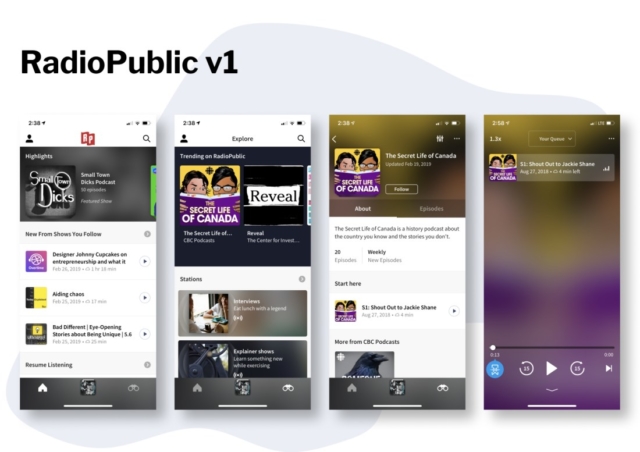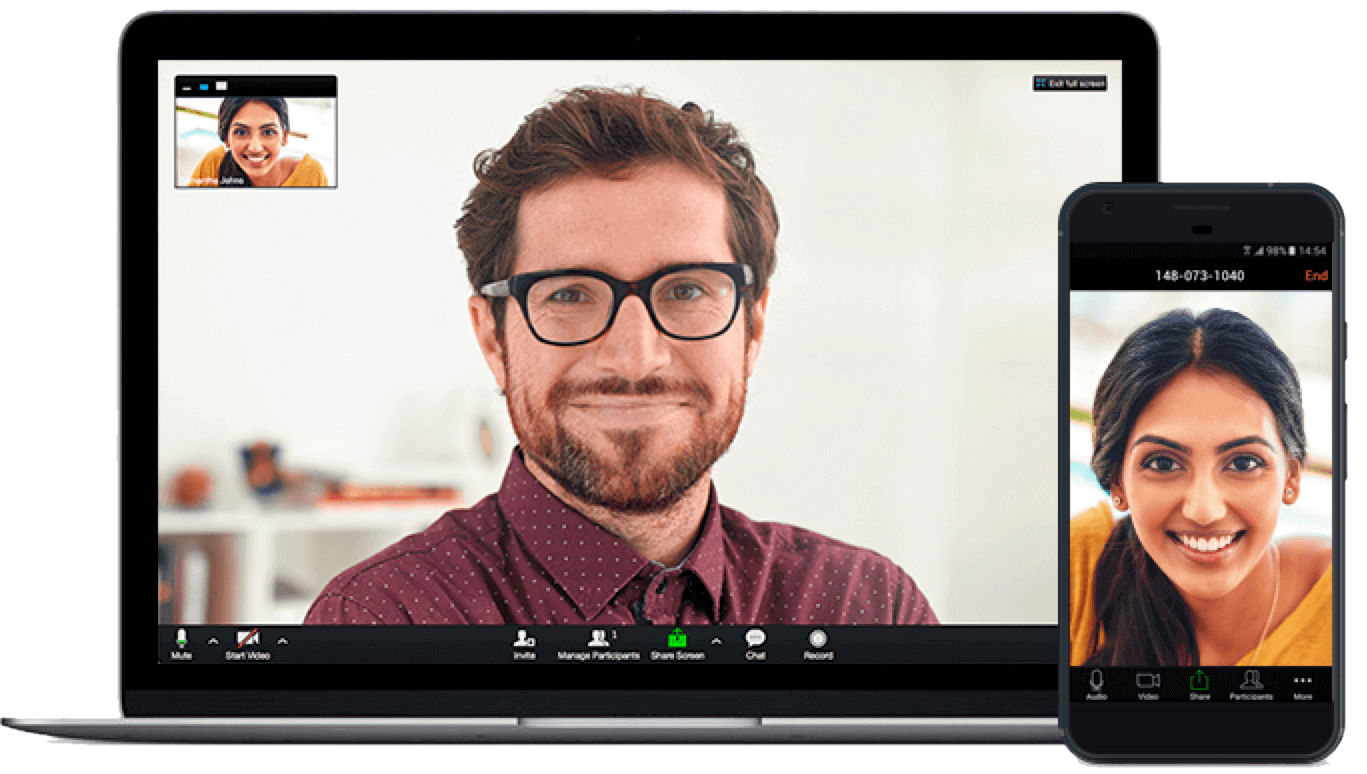Originally named as a combination of the words ‘iPod’ and ‘broadcast’, the podcast has been around for a long time. However, in recent years, we’ve seen a significant increase in podcasts’ popularity as people have turned to alternative entertainment during the global pandemic.
So what actually is a podcast?
What is a Podcast?
Technically speaking, a podcast is a digital audio file made available to download via the internet. Podcasting involves the preparation and distribution of these audio files. Using RSS feed technology, podcasters can distribute their audio files (usually in the form of an MP3 file) to their subscribed users, sending them to their listeners, who can then upload and tune in on any computer, Android device or other multimedia player such as the iPod.
Having saved the MP3 file, podcasters can upload it to the service provider’s website to give the podcast a URL.
Typically, a podcast will be a series of multiple broadcast episodes. Once created, podcasters can register with content aggregators like podcating.net or ipodder.org to list their podcasts in directories. This means listeners can search the various themes and categories or subscribe to a specific podcast RSS.
How to Listen to a Podcast?
With podcasts offering an easy-to-consume way of reaching a large audience, many businesses, media outlets, radio stations, bloggers or content creators have taken to the ‘podosphere’ to reach a wider audience for their messaging.
For consumers, listening to a podcast is an entertaining and easy way to consume our favourite topics, be it cycling, dog training, mental health, or simply the daily news on the move and in our own time. In fact, with over 43 million podcast episodes to choose from, consumers can listen to whatever takes their fancy. It’s no surprise that many have become avid podcast listeners in recent years, particularly during the Covid-19 lockdown.
Listening to a podcast is easy as long as you own a mobile device, tablet or computer. In fact, chances are, if you have a smartphone, you’ll have a native podcast app built-in. Podcasts are usually free and easy to access, especially if you have an android phone or iPhone. All you really need is a pair of headphones if you’re listening on the move or connect to a speaker to tune in at home.
How to Subscribe to a Podcast
As a listener, subscribing to a podcast is easy, and there are many different platforms to choose from when accessing your favourites. Once you discover a podcast you love, it’s a good idea to subscribe. That way, you’ll get updates when more recent episodes are broadcast, and you won’t have to search actively.
If you’re using the Apple Podcasts app, subscribing is easy. Search your favourite podcast, then hit the top centre’s subscribe button. If you’re listening in Spotify, search for your podcast and hit the ‘follow’ button.

Best Podcast Listening Apps
Different podcast apps suit the various ways you may want to consume your podcasts. Whether you’ve got into a routine of listening to your podcasts in the car on the daily commute, at home while you cook, or out on the run or walk, there’s an app that suits your listening needs.
While Spotify and Apple Podcasts are often the ‘go to’ option for podcast listeners, they lack the advanced functionality that can be beneficial for many listeners. Designed or modelled originally on apps for playing music instead of spoken word, their features for podcast listening are minimal at best.
With podcasts gaining traction as an alternative to music or audiobooks, many dedicated podcast apps have been developed in recent years, giving listeners the option to create podcast playlists, queue podcasts, speed up or slow down the recording, and even edit voice volume or shorten silences.
Here are some of the best podcast listening apps:
-
RadioPublic

If you want to add private RSS feeds, listen online and get intelligent suggestions on your listening choices, RadioPublic is a great option for listening on iOS and Android. If you’re particularly new to podcast listening and want to explore, RadioPublic creates curated lists based on listener reviews giving you a great new way to discover podcasts that suit your interests.
-
Player FM

Player FM is a great multiplatform podcast app. If you sometimes want to listen on the web, on an iPad, and an android phone on the move, Player FM is a great option for allowing that agility and flexibility. Boasting over 20 million podcast episodes (and counting), it’s also a great app if you’re looking for a broad range and variety of topics.
-
Castro 3
Castro 3 allows you to personalise your listening choices. Their Inbox feature allows listeners to queue or archive specific episodes, meaning you can dip in and out listening to specific episodes within a podcast series.
Their ‘night mode’ feature can be turned off and on with a two-finger swipe, and iMessage and Apple Watch support make this one a good option for Apple fans.
-
Pocket Casts
If you listen to a variety of different podcasts, Pocket Casts might be a good option for you. Its intuitive user interface and helpful search and filter options make it great for those wanting to explore the podosphere.
Pocket Casts also boasts more advanced features for the avid and discerning listener, including silence trimming, different speed variables and volume boost, as well as a syncing option that allows you to access the podcast where you left off when you switch to another device.
-
Overcast
The Overcast app is another great option for iPhone users. Overcast is renowned as a great app for those who might spend time in a Wi-Fi-free zone with customizable audio settings.
With Overcast, listeners can set varying speeds, shorten silences, boost specific voice volumes and rest in the knowledge that these customised settings will remain the same for that whole podcast series.
-
ListenApp

If you’re looking for an advert-free listening experience, check out Listen App. With this easy-to-navigate app, listeners can easily create customised queues, bookmark episodes to download and those you want to stream, and edit recording speeds according to preference. You’ll also be notified when new episodes are broadcast, and the app recommends new series and episodes based on your interests.
-
Google Podcasts

A go-to option for Android users, Google Podcasts is also now available in an iOS version. Google Podcasts is a strong option if you have a Google Home Speaker as it allows you to switch seamlessly between car speakers, phone and home smart speaker sound systems. Additional features include adjustable playback speeds, Google Assistant integration, and adding podcasts to the app directly from a google search.
Podcast Stats & Facts
As businesses look to alternative marketing means and advertising platforms and consumers seek entertainment and enrichment during lockdowns, podcasts have a renaissance.
With only 550,000 podcasts as of July 2018, the number has risen at an unprecedented rate, now with 1,750,000, the number of new podcasts is increasing daily.
In the UK, almost 16 million people listen to podcasts regularly, and that number has almost doubled from 8.9 million in 2017. According to research, 1 in 20 adults consumes their news via a podcast.
While one-third of online adults in the UK reportedly listened to music streaming services, podcasts or audiobooks during the lockdowns, it seems podcasts attracted a younger audience. However, more than half of all US consumers over the age of 12 listen to podcasts, according to a 2019 study.
According to OFCOM, younger adults (aged 16-34) were much more likely to have listened to a podcast. In fact, 55% of these younger citizens have turned into a podcast compared to 20% of those over 55. One in five of those aged under 34 will listen to a podcast every week.
Spotify recently credited the rising popularity of podcasts for a 24% growth in its subscriber numbers. It also announced that 25% of its users engaged with podcast content in the final quarter of 2020.
As consumers increasingly seek on-demand content for information and entertainment, it seems the rising uptake of podcast listening is a trend that’s set to continue in 2021 and beyond.

Best podcasts to listen to now
With so many podcasts to choose from, the podosphere is a treasure trove of enriching, educational and entertaining content. However, it can be a little overwhelming with such huge scope of choice if you’re new to podcasts and don’t know where to start.
Rest assured, whatever your hobbies and interests, there will be a podcast for you. With popular media outlets such as The Guardian and The New York Times boasting their own podcasts, podcasts offer an efficient way to keep up with current affairs. Bookworms can don the headphones for author interviews, budding chefs can gather cooking tips, or if gardening is your thing, there’s a whole host of horticultural broadcasts too.
If you’re new to podcasts or are curious about starting your own, we’ve outlined a variety of some of the best enriching, educational and informative podcasts to get you started.
-
The Smart 7
Smart 7 is a great way to get the daily news in bite-sized chunks. Covering sport, entertainment, politics and entertainment, The Smart 7 gives you everything you need to know for the day in just 7 minutes (or less).
-
Serial
If you’re looking for an entertainment fix for your daily commute, Serial is a great podcast to start your podcast listening journey. This narrated non-fiction series has quickly taken the podcast world by storm, a popular choice with true crime fans. Be warned, though; it’s an easy one to get hooked on as it unveils gripping true crime cases episode by episode.
-
The Wired UK podcast
For all things technology, science, culture and politics, head to the Wired UK podcast. Your weekly download of the current tech trends, innovations and all-around interesting stories that have taken place on Wired that week are all accessible as you walk the dog or prepare the dinner.
-
TED Talks Daily
From artificial intelligence to climate change and everything in between, TED Talks Daily is one for hungry and curious minds. Your daily dose of the worlds favourite conference celebrates ‘ideas worth spreading’ in podcast form so you can tune in at a time that suits you.
-
Desert Island Disks
In podcast format, the BBC 4’s classic radio show sees guests choose their eight tracks, one book, and a luxury item that they would take to a desert island. A popular show for music and culture fans, listeners get an insight into the nostalgic records and feelgood soundtracks of their favourite celebrities’ lives.
-
The 80,000 hours podcast
If altruism and self-improvement is your bag, you might want to tune into the 80,000 hours podcast. 80,000 hours is a UK-based organisation studying which careers can achieve the highest impact on the world. Expect some weighty intellectual topics such as philosophy and ethics, metacognition, climate change from these clever cookies, and settle in as episodes range from 1 to 2.5 hours apiece.
-
Wake Up/Wind Down – Niall Breslin
Mindfulness has become a running theme for many of us in the throes of the pandemic. Niall Breslin’s beautifully narrated, bite-sized audio snippets give listeners the perfect mindful moments of peace to begin and end every day.
How to use the RingCentral video platform to record your podcast with remote guests
Recording your own podcast is a great way to gain a broader reach with your marketing messages or generate interest in your brand agenda. Podcasts are easy to consume, and therefore can be highly impactful if you have the stamina to persevere and gain a strong following.
With RingCentral, the good news is that it’s also straightforward to get started and hit the ground running with your podcast recordings.
Whether you’re looking to broadcast a corporate roundtable discussion series, interviews with key opinion leaders in your industry, or a personal podcast for a passion project, recording your first episode will be the easy part.

If you’ve ever used RingCentral Video to record a meeting, you’re already one step ahead. Follow our easy-to-follow steps on how to use the RingCentral video platform to record your first podcast.
1. Prepare for your recording
Practice makes perfect.
Whether you plan to follow a script or want your dialogue to flow more naturally, practice using the platform to record and rehearse your content.
It’s a good idea to practice recording without your participants first so that you can perfect the process before going live.
To start practising your recording, start a meeting, either with a colleague or go solo, to familiarise yourself with the process. Whether you’re using RingCentral Video or an alternative video conferencing platform, there should be an undeniable visual on-screen indication that your meeting is being recorded.
Don’t forget to prepare your remote guests or co-hosts too. Ensure any guest speakers or interviewees have had a sufficient chance to rehearse any sessions or plan their responses before the live recording of your podcast.
2. Create your recording
Once you’ve run a few practices and your remote guests feel ready, you’re set to go live with recording your podcast. Once you’ve started your RingCentral meeting, select the ‘record’ icon to begin the capture of your meeting. Remember, a podcast is typically
audio-only, so it’s a good idea to have all participants turn cameras off to avoid any reliance on any body language, facial expressions or other non-verbal cues which your end listener won’t understand.
Remember, you can pause and resume your recording of the podcast at any point. That means it’s easy to take a recess or stop and start if you or your remote guests want to try a retake.
Remember to click the record icon promptly once all parties are present to kick-start your episode smoothly. Once you’re recording, there should be a red bar in the corner of the screen to indicate that the recording is capturing successfully. You can use a keystroke to start your recording (by pressing *9) or, if you’re worried you might forget to hit record, you can try automating your recordings to avoid mishaps in future.
3. Access your recording
It’s a good idea to establish where your recordings are stored before running your live podcast recording. That way, you already know how to access the file and can claim it quickly and easily once you’re done with the recording.
If you’re using RingCentral Video, you will usually find your recordings are saved automatically in a dedicated location within the platform. Alternatively, you have the option to set a specified location for your recorded files so you can access them in a dedicated file.
All recorded RingCentral calls or meetings are saved in MP4 format once the session has ended, so you’ll want to convert it into an MP3 audio file to begin the editing process.
Originally published Mar 09, 2021, updated Apr 10, 2023





